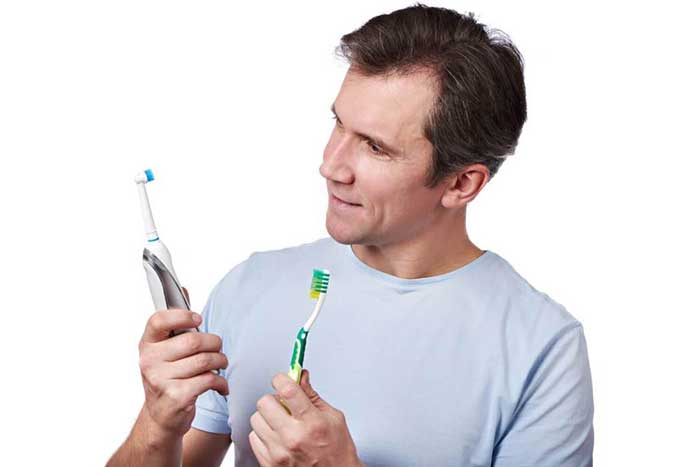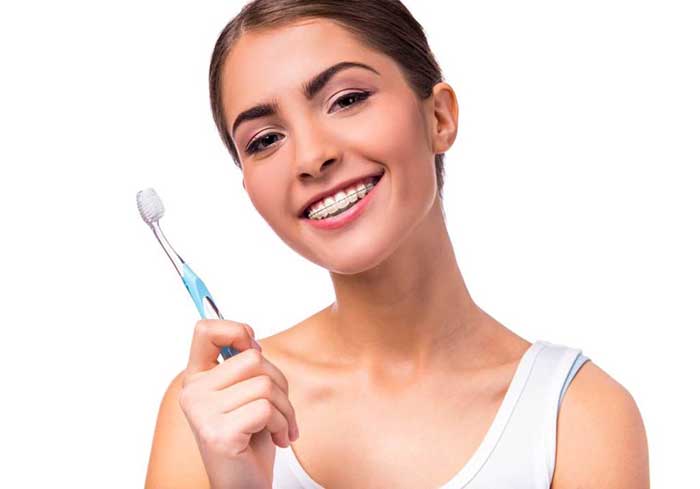Toothbrushes 101

When it comes to keeping your teeth and gums clean and healthy, few tools are as essential as the toothbrush. Yet you may not give much thought to choosing one carefully, let alone caring for it properly over time and knowing the signs that it needs to be replaced. Your toothbrush plays a crucial role in keeping your smile looking and feeling great, and knowing how to choose, care for, and ultimately replace the right brush are important components of your overall oral health. Here at Christopher Cooley DDS, we want our patients to feel confident in choosing the dental tools that will give them a beautiful, healthy smile! Let’s take a look below at how to choose the right toothbrush, the best ways to care for it, and how to know when it’s time to replace it.
Choosing the Right Toothbrush
With so many different shapes, sizes, and styles of toothbrushes on the market, the oral health aisle of any store can be overwhelming, making it difficult to find exactly what you’re looking for. Experts agree that the best toothbrushes all share a few common characteristics, and knowing these can help narrow down your selection quite a bit. Here’s what to look out for:
Soft bristles – Most dental professionals recommend using a soft-bristled brush to effectively remove plaque and debris from your teeth and gum line. Soft bristles are ideal for most people, as they are gentle on the teeth and gums and less likely to cause any irritation or damage to the gums, enamel, and root surfaces.
Your comfort is key – The best toothbrush is one that fits your mouth and allows you to reach all the teeth easily. In general, however, brushes with small heads are preferable, since they can better access all areas of the mouth, including those back teeth that can be so hard to reach and clean. There are various types of handles (non-slip grip, flexible neck, etc), head shapes (tapered or rectangular) and bristle styles (rippled, flat, domed, etc.) Pick the features that are most comfortable for you.
Professional endorsement – When selecting a toothbrush, look for the ADA Seal of Acceptance, which is the gold standard for quality. This seal signifies that the ADA Council on Scientific Affairs has evaluated the brush to make it’s safe and effective. In other words, the bristles won’t fall out with normal use, the handle will stay strong, and it will help reduce your risk of developing cavities and gum disease. Dr. Cooley is also happy to recommend a toothbrush for you based on your specific dental needs.

Caring for Your Toothbrush
Properly caring for and maintaining your toothbrush is an important part of oral hygiene. The American Dental Association provide the following recommendations for toothbrush care:
Replace your toothbrush about every 3-4 months – The bristles of a toothbrush become frayed and worn with use, decreasing their effectiveness. Toothbrushes can wear out more rapidly depending on individual factors, such as frequency of brushing and the pressure used when brushing. Check brushes often for wear and tear, replacing them more frequently if needed.
Don’t share your toothbrush – Sharing toothbrush results in an exchange of body fluids and microorganisms, and can place you and the other person at an increased risk for infections. This is a particular concern for anyone with a compromised immune system or existing infectious disease. This is one instance where sharing is not caring!
Rinse after use – Be sure to thoroughly rinse your toothbrush with tap water after brushing in order to remove any remaining toothpaste or debris. We recommend storing the brush in an upright position and allowing it air dry until you use it again. If you have multiple brushes stored in the same holder or area, keep them separate in order to prevent cross-contamination. Don’t cover your toothbrush or store it in a closed container. This can lead to a moist environment that encourages the growth of microorganisms.
Replacing Your Toothbrush
The American Dental Association recommends replacing your toothbrush every 3-4 months, but there are instances where you may need to replace it sooner, including:
Extensive wear – Although most toothbrushes will show some signs of physical wear over time, once the bristles begin to fray and point outward instead of standing up straight, they are no longer able to efficiently clean the teeth and gums. If you notice your bristles wear out faster than the 3-4 month mark, you may be brushing too hard. This can actually damage your teeth or cause them to be more sensitive. How thorough you are when your brush is much more important than how hard you brush, so remember to use gentle, circular motions when cleaning your teeth.
After sickness – Bacteria from illnesses can linger in the bristles of your toothbrush, so you should always replace it after you’ve recovered from a cold, virus, or flu. Replacing your toothbrush promptly prevents bacteria from being reintroduced, so you don’t get sick again with the same thing.
Families today have a lot going on, and we know it can be difficult to keep track of when you should replace your toothbrush. Many toothbrush manufacturers have designed a guide into the bristles of their brushes, usually in the form of a colored strip of bristles. Once the color starts to fade significantly, it’s time to get a new one. You can also put a note in your personal calendar every 3 months to remind you to buy a new one, or even set an alarm on your smartphone.

Healthy Toothbrushes Lead to Healthy Smiles at Christopher Cooley DDS
By using the tips above to properly choose, care for, and replace your toothbrush, you can enhance your oral hygiene routine and improve your dental health. We also recommend scheduling regular dental visits with us at our Germantown office. Dr. Cooley will be able to thoroughly examine your teeth and gums for any issues, and give you further instructions about the best way to care for your smile. He will also offer toothbrush recommendations or advice if needed. To keep your teeth and gums looking and feeling great, get in touch with us today!
